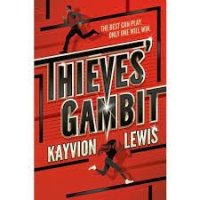When students seek out a female Civil Rights role model, they often look no further than Rosa Parks, who is indeed deserving of the recognition. Still, students can find an equally admirable role model in Marian Anderson, if only they can find a good biography of her. Russell Freedman has provided just that in The Voice That Challenged a Nation.
With a generous collection of photographs and reproductions of Anderson’s recital programs, Freedman traces her extraordinary life from a 6-year-old in the junior choir at her church to a world-renowned contralto who lived to age 96. Her story is remarkable enough, with her rise to the world stage from her humble beginnings in Philadelphia. When one considers how she broke racial barriers armed with nothing but her magical voice and graceful poise at a time when Jim Crow laws were firmly in place, that rise to fame is nothing short of astounding.
Like many African-American artists at that time, Anderson failed to reach her zenith in the United States until she was embraced by music aficionados abroad. Returning from a tour of Europe and Scandinavia she was suddenly in demand for concerts across the United States, even in the South. There, however, was where she experienced discrimination as she never had before. Denied lodging at hotels, she stayed in private homes and sang in halls with “colored” seating in the back.
Her quiet struggle against discrimination came to a head when the Daughters of the American Revolution barred her from holding a concert in Washington DC’s prestigious Constitution Hall, noting that their organization had ruled against colored artists performing there. While Anderson never outwardly fought or spoke against them, First Lady Eleanor Roosevelt was incensed enough to resign her membership from the venerable institution, causing a national uproar. The DAR stood firm, and Marian Anderson held a free concert at the foot of the Lincoln Memorial instead, performing for tens of thousands of rapt listeners, and millions more on the radio.
Freedman makes is clear that Anderson was not a fighter per se, but her grace and good nature served as a stark contrast to the ugliness of discrimination. Before long, the DAR relaxed its policy, and invited Anderson to headline a concert in their Hall, and without segregated seating as well.
I highly recommend Freedman’s biography of Marian Anderson. Students will not only come to know this beautiful and talented artist, but will also get an authentic look at the times in which she lived and the circumstances (good and bad) under which she blossomed.
This 114-page book will be excellent for research as it includes chapter notes, a selected bibliography, a selected discography, and index.
Recommended by Jane Behrens, Librarian






